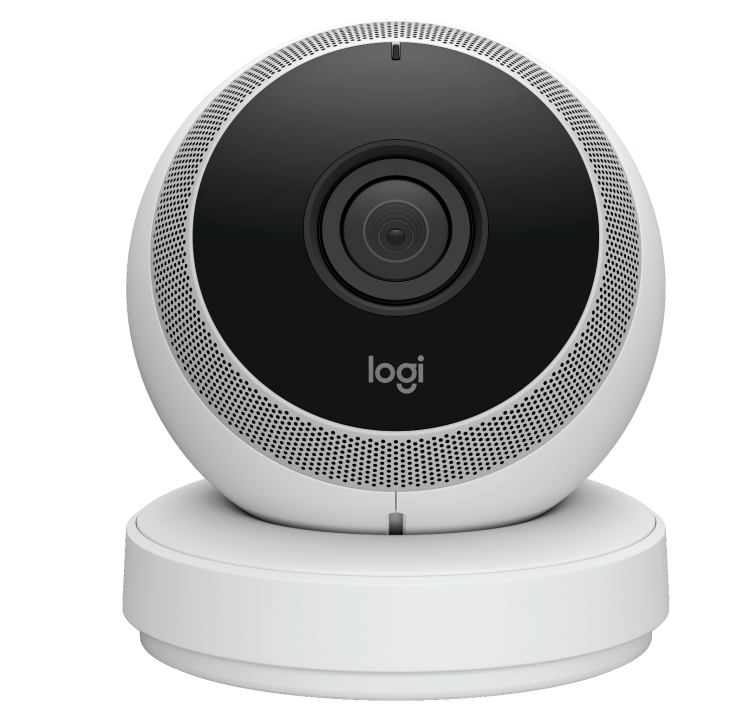Logitech is a brand synonymous with PC peripherals and accessories, but the Swiss company has been delving into an increasing number of categories in recent times as it looks to remain relevant in the post-PC age.
Earlier this year, Logitech announced a new sub-brand that will be attached to many of its new products. So far, “Logi” has found its way onto a handful of iPad accessories and a life-logging, home-monitoring camera. But “Logitech” is still being used on other products, such as keyboards, mice, headphones, and even steering wheels for gamers.
Founded in 1981, Logitech has built a solid reputation in the tech realm, but if it’s to survive another 35 years, it has to evolve. And this is exactly what it’s doing, underpinned by a fresh four-letter brand name and suite of new products.
VentureBeat caught up with Logitech CEO Bracken Darrell at Dublin Web Summit last week to get his thoughts on where the company’s at, and where things are heading from here on in.
Home automation
The global home automation market is set to hit more than $20 billion by 2020, with Apple embracing the trend, Google-owned Nest making waves, and countless startups popping up globally. It’s a potentially lucrative market, one that Logitech has been edging into with smart remote controls, cameras, and more. But Logitech isn’t a company you would associate with the “smart home,” and this is something Logitech wants to change.
“A lot of people don’t understand us really,” said Darrell. “They look at us and say, ‘Oh, you make mice and keyboards’ — but fundamentally, we’re a technology company. We can make tablets or PCs or smartphones. We have that capability.”
Wait, so could Logitech be branching out into the super-competitive mobile and PC hardware realm? “No, I don’t really want to play in those spaces, I want to play in places where we can be the big fish,” Darrell demurred.
By referring to “tablets or PCs or smartphones,” Darrell was simply trying to highlight the company’s technology credentials. It has the resources and manpower, but the company is ultimately too late and would be playing catchup for the most part. “I could never imagine trying to compete with Apple and its Mac,” said Darrell. “It doesn’t seem like a smart move for us. We want to focus on things where we can be number one, number two, or number three.”
One of Logitech’s chosen verticals is cameras — security cameras, conference cameras, webcams and, as of September, a Nest-style smartphone-connected camera that lets you keep tabs on everything that’s going on in your home.
The Logi Circle was Logitech’s second product line to sport the Logi nomenclature, and this will be used on all new category lines moving forward. The new name signals the rebirth of a company that could have become a legacy PC brand.
Despite some reports at the time suggesting that Logitech may eventually switch its name entirely to Logi, that isn’t the case. Darrell confirmed to VentureBeat that “Logitech” will always be the company name.
Looking beyond rebrands and rebirths, there could also be some practical reasons for shaving four letters off the Logitech name. As devices get smaller, it’s easier to splash four letters across the surface of a product. But Darrell reckons that shrinking the name is symbolic of a shift in internal culture at the company.
“We really want to be a ‘small’ company,” he said. “Less bureaucracy, less hierarchy, more informal. Nobody has an office — you won’t see a single office in (our) Silicon Valley (base).”
Darrell pointed to the open-plan layout of the large auditorium — where VentureBeat was conducting the interview, people sat side-by-side, almost touching elbows — as an example of how Logitech is trying to shape its internal philosophy. Even Darrell doesn’t have his own office.
A design for life
Today, Logitech has around 600 engineers globally, and it has research and development (R&D) hubs in Lausanne, in Logitech’s native Switzerland; one in Silicon Valley; and — perhaps surprising to some — one in the tiny Irish city of Cork. “It began as a manufacturing site 25 years ago, and we’ve just kept it,” said Darrell.
Logitech puts around 6 percent of its budget directly towards R&D, which is “disproportionately large on the new stuff,” said Darrell. “We’ve reduced investment on the mice and keyboards, and a bunch more on the other stuff. We were totally PC dependent three years ago, but we’ve really moved the company’s centre of gravity into new design-led products.”
And this is the future for Logitech. The company sensed the consumer shift away from laptops and desktops, and has sought to invest in categories it thinks it can carve a sizable niche in.
To help drive this push, Logitech capitalized on Nokia’s downwards turn and hired its former design chief, Alastair Curtis, in 2013. Curtis has been charged with helping to reinvent the Logitech brand with bold colors and a more distinctive look-and-feel.
Before Curtis jumped on board, Logitech worked with external design firms. And although it still does this to some degree, having a large in-house design team should help the firm double-down on slicker products that adhere to a cogent brand.
“When he came in, we didn’t have a single trained designer,” explained Darrell. “Now we have a huge design team all over the world. One of the first things we (Darrell and Curtis) did, was we worked on a set of design principles. Then the next we thing did, we started building this out into the organization.”
So has Curtis brought in a ton of former Nokia design personnel? Not really, as it happens. “It’s been a real mix, we’ve got Nike people, Ideo people, and others,” said Darrell.
Though Logitech does have some former Apple folks in the company, they don’t work in the design team.
The future, according to Logitech
Logitech is working on “six or seven” new product lines and will enter “multiple spaces,” though Darrell wouldn’t divulge what those are. “We could really go into such a huge range of categories, we look at a lot of things,” he said. When probed on whether the company would consider entering the automobile realm, Darrell gave a coy “no comment,” though he later reaffirmed that he saw opportunities everywhere, “including the car.”
“Here’s the thing, this is an amazing moment for a company like us,” said Darrell. “On one end of the spectrum, there are big companies going after the really big categories. You’ve got tens of thousands of startups building hardware niches. Then there’s us sitting in the middle. We’re really good at hardware, we’re getting very good at software and analytics. So that opens up such a range of possibilities that I can’t even describe it and do it justice. What we need to do is pick our battles.”
From speaking to Darrell, it seems there are a number of companies it could emulate, consciously or otherwise. I couldn’t help but think of Dyson when speaking with the Logitech CEO. To many, Dyson is just a company that builds vacuum cleaners, but it has set itself apart with other iconic products, including hand-driers and quirky air purifiers. Last year, Dyson set aside $2.3 billion to invest in “future technologies,” as it looks to bring 100 machines in four new portfolios to market over the next four years, and is pushing into solid-state battery technology to help power part of this.
And then there’s Apple, a company that’s difficult to ignore when discussing design and hardware.
“Inasmuch as Apple is the best at it (design), I think we all take design cues from Apple,” said Darrell. “Apple raised the standard of excellence in hardware products. But our target is different, and our goal is different. Do we take cues from Apple? Everybody does. But we really run our own program.”
Logitech has a long way to go to match Dyson or Apple’s footprint, but with R&D hubs, a design-focused approach, and all-hands-on-deck for the future, Logitech is working hard to ditch the “mice and keyboards” legacy it has built over 30 years.
“Our goal is to create an iconic product every time we launch one,” said Darrell. “We’re going to be where we think we can create an amazing experience, create a platform that can grow over time, one that we can be the leader in.”
VentureBeat's mission is to be a digital town square for technical decision-makers to gain knowledge about transformative enterprise technology and transact. Learn More


